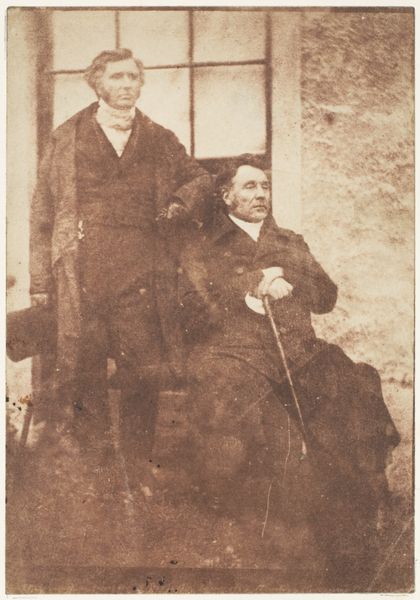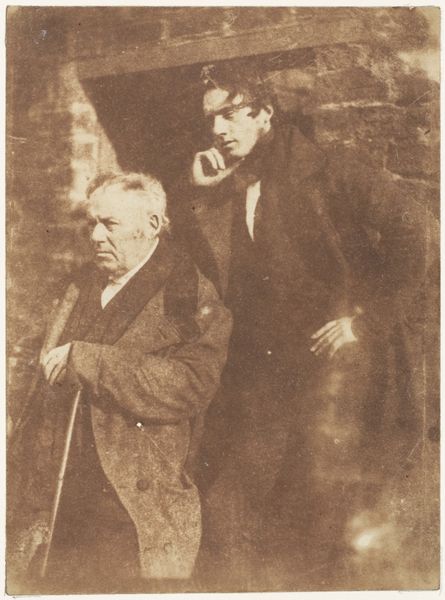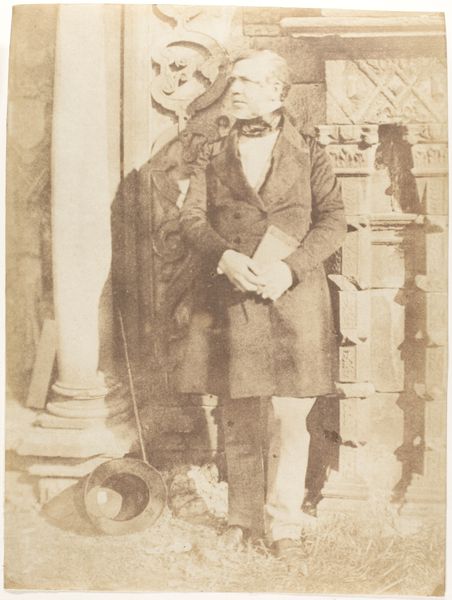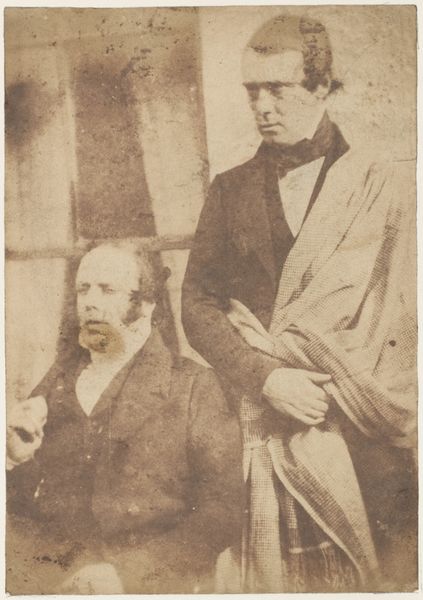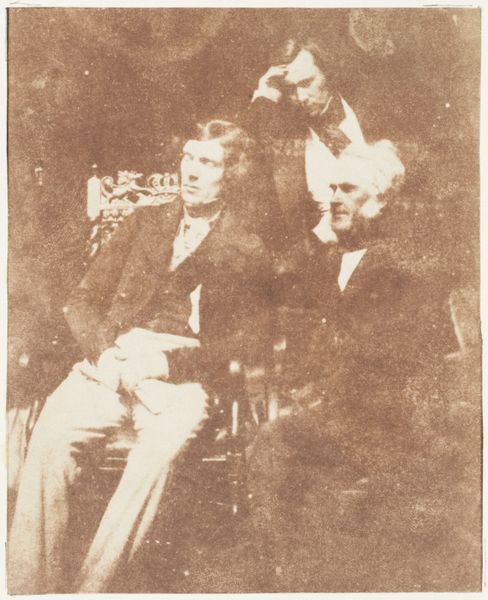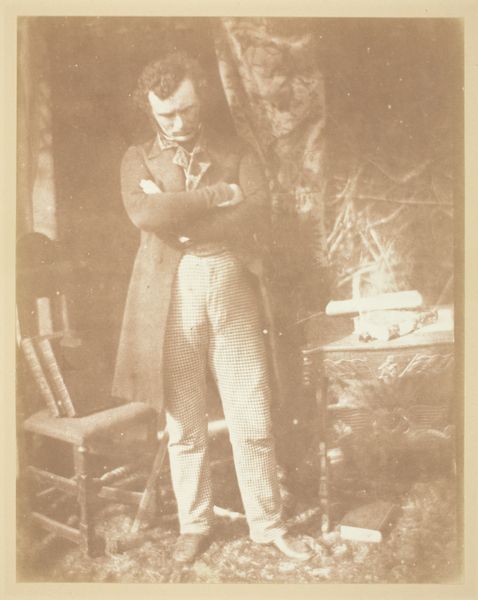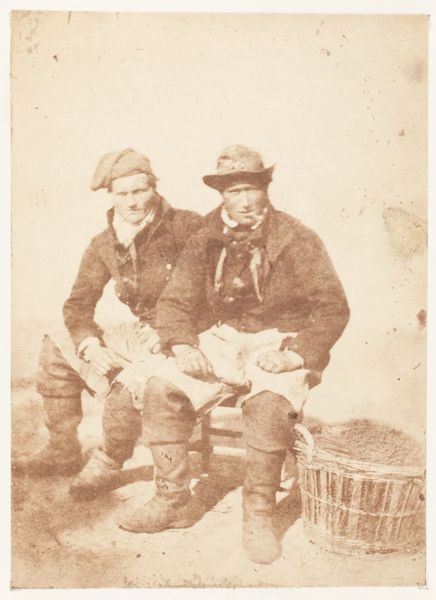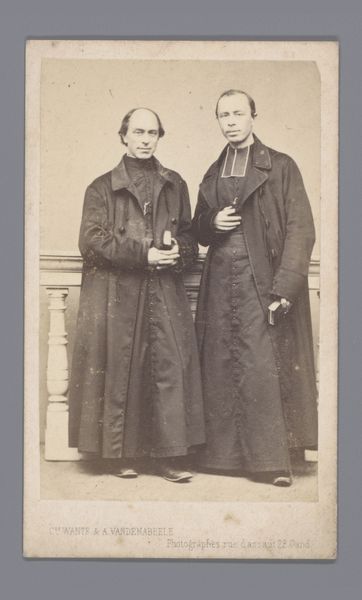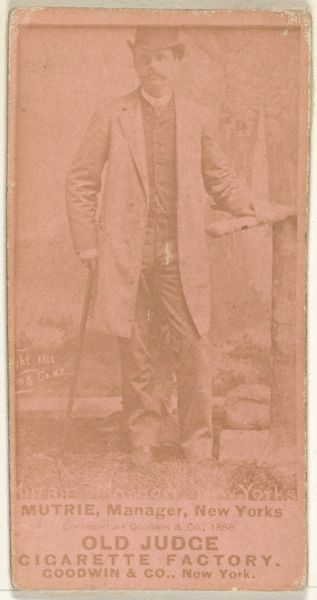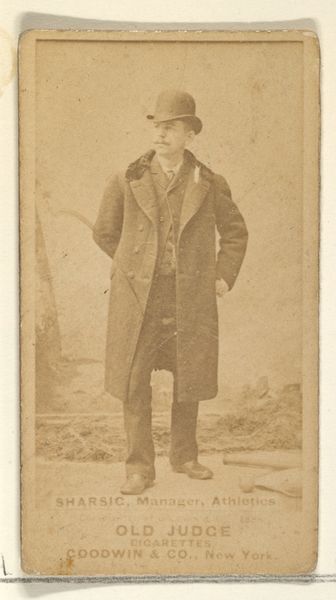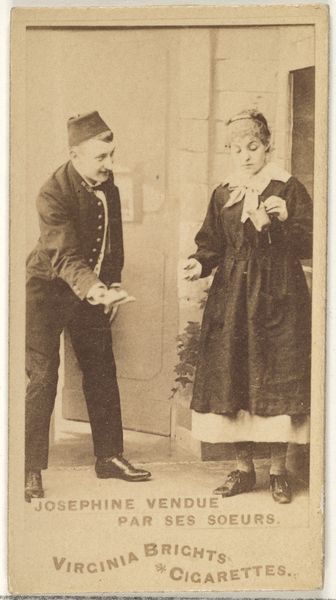
daguerreotype, photography
#
portrait
#
daguerreotype
#
photography
#
historical photography
#
romanticism
#
men
#
history-painting
Copyright: Public Domain
Editor: This is "D.O. Hill and W.B. Johnstone," a daguerreotype made between 1843 and 1847 by Hill and Adamson. The subjects appear confident, even relaxed, in front of what looks like a stone doorway. What stories do you see emerging from this image? Curator: This image goes beyond a simple portrait. It signifies the intersection of art, science, and social change in 19th-century Scotland. Photography at the time was in its infancy, and figures like Hill and Adamson were at the forefront, democratizing portraiture in ways never before imagined. Consider how access to having one's image created shifted power dynamics within society. What statement do you think this work makes, considering it captures two men posed as equals despite the conventions of their time? Editor: That's a compelling point! It challenges my initial interpretation. I had just considered the photograph as a documentation of friendship but, viewing it now through a socio-political lens, it hints at the democratization of art and representation. Curator: Precisely. And further, consider that this collaboration emerged from Hill's commission to document the ministers who founded the Free Church of Scotland. Their break from the Church of Scotland was itself a powerful statement. So how might that context inform how we understand this particular image, outside that larger project? Editor: It frames them as figures within a larger movement challenging established institutions, even when they seem to be casually posing for a portrait. I see how the photo now carries symbolic weight. Curator: Absolutely! This work pushes us to ask crucial questions: Who gets to be represented, and on whose terms? That photograph can serve as a launching point for broader discussions around representation, power, and social change in the history of photography and art at large. Editor: I’m definitely seeing it differently now. I’m thinking of other photographers who used portraiture for similar political means! Thanks!
Comments
No comments
Be the first to comment and join the conversation on the ultimate creative platform.
